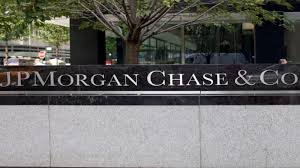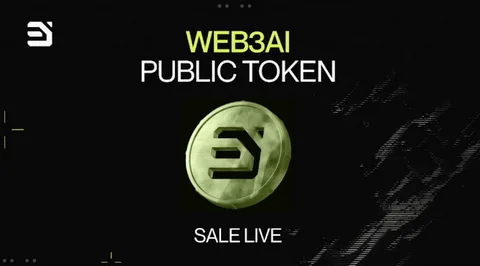Introduction
JPMorgan Chase, one of the largest financial institutions in the United States, is currently under intense scrutiny as allegations of fraudulent account withdrawals surface. The bank has long been considered a cornerstone of American finance, serving millions of clients with a reputation for reliability and security.
However, in recent months, that image has come under fire. Numerous customers have reported suspicious activities involving unauthorized withdrawals from their accounts, and questions about the bank’s internal controls and security measures are mounting.
In this article, we will investigate the allegations against JPMorgan Chase, delve into the nature of the fraudulent account withdrawals, examine the bank’s response to the controversy, and assess the potential impact on its customers and the broader financial industry. This case has serious implications not only for JPMorgan Chase but also for the trust that customers place in financial institutions worldwide.

1. The Nature of the Allegations: Fraudulent Account Withdrawals
The central issue at the heart of the controversy is the alleged fraudulent account withdrawals experienced by JPMorgan Chase customers. Many clients claim that significant sums of money have been mysteriously withdrawn from their accounts without their consent. These unauthorized transactions have left customers confused, frustrated, and in some cases, financially devastated.
The allegations suggest a potential breach in JPMorgan Chase’s internal security measures. The fraudulent account withdrawals appear to have occurred over several months, with some customers reporting that they had not received proper notification or assistance from the bank in a timely manner. Victims of the fraud claim that JPMorgan Chase’s customer service has been slow to address their concerns, raising questions about the bank’s commitment to safeguarding its clients’ funds.
Further complicating the situation is the fact that many of the unauthorized transactions have occurred on accounts that were deemed secure, such as those with two-factor authentication and other enhanced security features.
This raises the possibility that the fraudulent account withdrawals may not be the result of simple user error or phishing scams but instead could point to more serious vulnerabilities within JPMorgan Chase’s systems.
2. JPMorgan Chase Under Fire: The Bank’s Response to the Allegations
As the scandal continues to unfold, JPMorgan Chase has come under fire from both the media and regulators for its handling of the situation. In an official statement, the bank acknowledged the allegations of fraudulent account withdrawals and stated that it is investigating the claims. However, the public response has been mixed, with many customers expressing dissatisfaction with the bank’s transparency and communication during this crisis.
JPMorgan Chase has maintained that it takes the allegations seriously and is working to resolve the issue. The bank has assured customers that any fraudulent account withdrawals will be investigated thoroughly, and affected clients will be reimbursed for their losses.
However, for many customers, the bank’s reassurances are not enough. They argue that the fraudulent account withdrawals should never have occurred in the first place, and they are demanding that the bank take stronger action to prevent future breaches.
In response to the mounting pressure, JPMorgan Chase has reportedly increased its focus on cybersecurity. The bank has begun rolling out additional security features, such as more robust fraud detection systems, to prevent further unauthorized transactions. Despite these measures, the bank remains under fire for the perceived failure to adequately protect its customers from fraudulent account withdrawals.
3. The Role of Regulation: How Authorities Are Reacting
In light of the allegations against JPMorgan Chase, regulatory authorities have taken notice. The scale of the fraudulent account withdrawals has prompted investigations by financial regulators, including the Office of the Comptroller of the Currency (OCC) and the Consumer Financial Protection Bureau (CFPB). These agencies are tasked with ensuring that banks like JPMorgan Chase adhere to strict standards of financial security and customer protection.
Regulators are particularly concerned about whether JPMorgan Chase’s internal controls were adequate to prevent fraudulent account withdrawals on such a large scale. If it is found that the bank did not implement sufficient security measures, it could face hefty fines and sanctions. Moreover, regulatory authorities are also exploring whether the bank adequately communicated with its customers during the unfolding crisis.
The CFPB has reportedly received numerous complaints from JPMorgan Chase customers who claim that they experienced significant delays in receiving assistance after discovering the fraudulent account withdrawals. These complaints have sparked a larger conversation about customer rights and the responsibilities of financial institutions to provide timely and effective resolutions to disputes.
While the regulatory investigations are ongoing, many expect that the outcome could lead to stricter rules governing how banks handle customer funds and address fraudulent account withdrawals. JPMorgan Chase’s case has highlighted the need for greater accountability within the financial sector, particularly as cyber threats continue to evolve.
4. The Impact on JPMorgan Chase’s Reputation and Customer Trust
Perhaps one of the most significant repercussions of the allegations is the damage done to JPMorgan Chase’s reputation. As a financial institution that has long been regarded as a leader in the banking industry, the news of widespread fraudulent account withdrawals has shaken the trust of its customers. For many clients, the ability to trust their bank with their money is paramount, and any breach of that trust can have long-lasting effects.
Social media platforms and online forums have been flooded with complaints from JPMorgan Chase customers, many of whom are considering switching to other banks. The controversy has prompted discussions about the risks of centralized banking systems and whether large financial institutions can truly offer the level of security they promise.
In response to the growing dissatisfaction, JPMorgan Chase has launched a public relations campaign aimed at reassuring its customers. The bank has emphasized its commitment to addressing the fraudulent account withdrawals and improving its security protocols. However, rebuilding trust after such a high-profile scandal will likely be a long and challenging process.
The broader financial industry is also watching closely, as JPMorgan Chase’s handling of the situation could set a precedent for how other banks respond to similar crises in the future. If JPMorgan Chase successfully manages to mitigate the impact of the fraudulent account withdrawals and restore customer confidence, it could serve as a model for other financial institutions facing cybersecurity challenges. However, if the bank’s response is deemed inadequate, it could lead to lasting reputational damage and potential loss of market share.
5. The Bigger Picture: What This Means for the Banking Industry
While the spotlight is currently on JPMorgan Chase, the implications of the fraudulent account withdrawals scandal extend far beyond the bank itself. The case has sparked renewed concerns about the vulnerability of financial institutions to cyberattacks and internal fraud. As banks increasingly rely on digital systems to manage customer accounts and transactions, the potential for breaches in security continues to grow.
The JPMorgan Chase scandal highlights the need for all financial institutions to reassess their security measures and ensure they are equipped to prevent fraudulent account withdrawals. This includes not only implementing advanced fraud detection systems but also training employees to recognize and respond to potential threats. Banks must also prioritize transparency and communication with customers, particularly when it comes to addressing concerns about fraudulent transactions.
For consumers, the controversy serves as a reminder to remain vigilant when it comes to monitoring their financial accounts. While banks have a responsibility to protect their customers, individuals must also take steps to safeguard their personal information and report any suspicious activity promptly.
Conclusion: A Call for Accountability and Transparency
As the investigation into the allegations of fraudulent account withdrawals continues, JPMorgan Chase remains under fire. The bank’s handling of the situation will be critical in determining its future reputation and customer loyalty.
While JPMorgan Chase has taken steps to address the crisis, the scandal has exposed vulnerabilities that cannot be ignored. Both the bank and the broader financial industry must learn from this incident and take proactive measures to prevent similar breaches in the future.
The case of JPMorgan Chase is a stark reminder of the importance of accountability and transparency in the banking sector. As customers, regulators, and competitors alike continue to scrutinize the bank’s response, the long-term impact of this scandal remains to be seen.
We encourage you to share your thoughts on this matter. Have you experienced any issues with your bank or financial institution? What do you think banks should do to protect customers from fraudulent account withdrawals? Leave a comment below and join the conversation.






